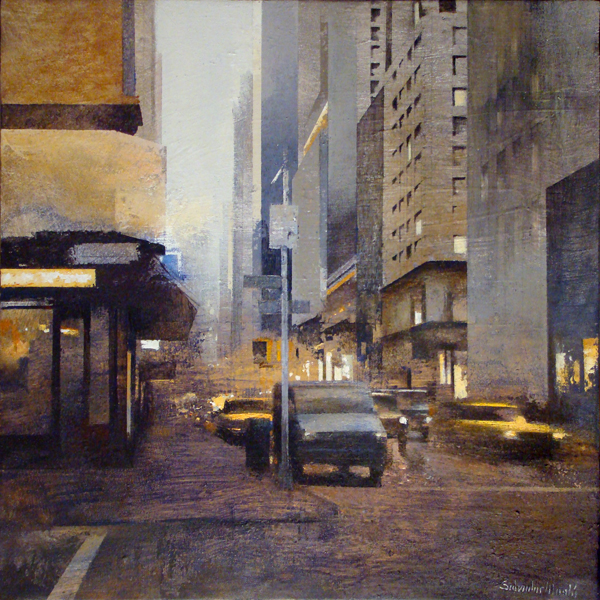 |
"Reno" (2011) Oil on Canvas, 180 x 240 cm (5.9 x 7.9 ft)
|
 |
"even prettier once it got dark" (2012) Oil on Canvas, 180 x 240 cm (5.9 x 7.9 ft)
|
 |
| "Even prettier once it got dark" detail |
 |
"Ellipsis" (2012) Oil & Acrylic on Canvas, 180 x 240 cm (5.9 x 7.9 ft)
|
 |
"artificial light" (2012) Oil on Canvas, 180 x 240 cm (5.9 x 7.9 ft)
|
O'Donoghue is an Irish artist currently in Germany whose work is a fascinating exercise in reverse engineering. All painting is about seeing, but what happens when seeing is filtered through pixels and compression formats, erasing details that we barely notice are gone? His work looks in at the missing detail and reinvents it in an extraordinary series of process paintings. You need to do 2 things real quick (if you haven't already): 1. Go back up to look carefully at the detail image of "Even prettier once it got dark" and see where it fits in to the whole of the original. 2. Note the size of these paintings! The paintings are composed of discreet pieces, like pixels, but each pixel is treated like it's own abstract image with the loving attentions of brush and color. We have seen things along these lines before of course. Pixelated images composed of hundreds of other images became almost a cliche in the previous decade, and
Chuck Close has been working with similar ideas for much longer. But O'Donoghue brings a unique approach. Tremendous attention and subtlety is brought to bear on the discrete pieces so that they can no longer be seen as mere pixels. He introduces invented and beautiful detail where it was lost. At the same time the overall image is disintegrating, losing it's cohesion as if through signal noise or the slow processing of a moving image. His choices of recent subject matter (culled from the infinite gathering space of the internet) seem to parody this structural contrast. Amusement parks, casinos and the mass experience in general reflect both the rich intensity of human experience and the disintegration of the self into a sometimes meaningless kaleidescope of external stimuli. This work is, in short, a powerful visual commentary on the rewiring of our connections to reality.
Trying to share them like this, as small digital reproductions, is almost a
bad joke. I myself have never seen the originals but I can extrapolate
in my mind what is going on here and imagine the effect, if imperfectly.
I'm hoping you can too. And maybe one of us will get a chance to see
the real thing someday.
You can see more work and many more detail images as well on his website:
www.endaodonoghue.com
His work is currently on display through the 18th of January in his hometown of Limerick, Ireland at
gallery.limerick.ie
And sorry for the delay. I'll have more work up next week.








































